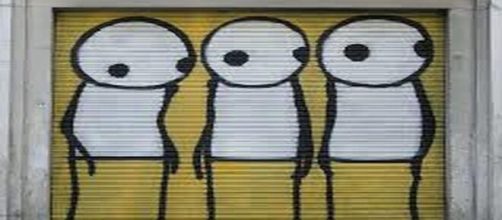The what-is-art question raises its skeptical head from time to time. You could see the inquiry especially in the ‘40s and ‘50s when the post-WWII painting movement - dubbed Abstract Expressionism by New Yorker art critic Robert Coates - was baffling the public.
Post-traumatic stress disorder
As if to explain the mid-century movement, Wesleyan University asserted in a course of study on the subject that Abstract Expressionism “represents both a political and psychological shift in America.” If you go by that reasoning, Abstract Expressionism is a symptom of post-traumatic stress disorder in response to the horrors of WWII.
In that case, you might also call a style that declares war against modern civilization Anti-art.
Equating Abstract Expressionism with Graffiti
And the very same thing can be said of Graffiti today. Which means that the question raised by Guardian critic Jonathan Jones - “When does street art become ‘art’ art?” – is beside the point. As I see it, the world is going through hellish wars at the moment: a killer virus, killer racism, and killer climate change. Graffiti, like Abstract Expressionism seems to be giving “art” the finger.
Work by the artist’s own hand is out of the picture
Jones doesn’t see it that way. Pointing to British graffiti artists Banksy and Stik, who have left their mark on walls in Asia, Europe and the U.S., he says that whether you think their spray-paintings are a public nuisance or a democratic art form, “street art is not only art, but the purest art around.” As he explains, with all the digital and video work created in the 21st century - none of which is hand-made - “street art mystically returns to the primal urge to make a mark on a blank surface…a signal struggling through the white noise of modern life.” Which is not unlike the slogan “Kilroy Was Here” scrawled on walls after WWII.
This goes to my point that street art is a sign of PTSD. Whether it’s art or not is irrelevant.
Memorializing police brutality with spray paint
ABC news seems to make my point with its report on graffiti, noting how it reflects black lives lost to racism: “Millions of Americans took to the streets this summer to protest the deaths of George Floyd and countless other Black people victimized by racism and police violence.”
So, right now it doesn’t matter if street art is “art.” In fact, asking the question of those who memorialize lives lost to racism or to a virus or to wild fires and floods misses the point of spray-paintings in the streets that offers either social commentary or comic relief. Some day when the anguish of the world calms, historians can ask the question. Asking it now comes across as unseemly.


